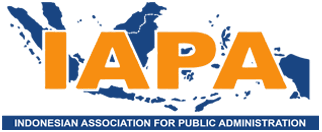The Challenges of e-Procurement Implementation in Infrastructure Projects
DOI:
https://doi.org/10.21776/ub.jpas.2018.003.01.3Keywords:
E-procurement, system implementation, IndonesiaAbstract
This paper aims to explore the challenges of e-procurement implementation and how to overcome these challenges in infrastructure project of Ministry of Public Work and Housing. This study used secondary data analysis such as blue print, activity report, performance report and financial report. The data were collected on January 2018. The findings show that there are two key challenges of e-procurement implementation. Challenges in system specification are not only related to software integration and data management, but also legal and administration procedures and IT infrastructure. Challenges in implementation management are related to roll-out strategy and IT skills. However, there is no issue in IT outsourcing. Findings also show that there are impacts of e-procurement implementation on total cost of acquisition, organizational characteristics, and governance structure. Challenges can be overcome by establishing integrated e-procurement system and centralized database.
References
ADB. (2004). Promoting Good Governance: ADB’s Medium-Term Agenda and Action Plan. Available at https://www.adb.org/sites/default/files/institutional-document/32845/files/promoting-good governance.pdf [Accessed on 27 July 2017].
ADB, IDB, & World Bank. (2004). Strategic Electronic Government Procurement - Strategic Overview: an Introduction for Executives. Available at http://documents.worldbank.org/curated/en/794991468152096524/pdf/882520WP0Box380icOverview0March2004.pdf [Accessed on 27 July 2017].
ADB., & OECD. (2008). Managing Conflict of Interest: Frameworks, Tools, and Instruments for Preventing, Detecting, and Managing Conflict of Interest. Available at https://www.adb.org/sites/default/files/publication/27975/managing-conflict-interest.pdf [Accessed on 27 July 2017].
Aman, Aini and Kasimin, Hasmiah. (2011). E-procurement implementation: a case of Malaysia Government. Transforming Government: People, Process, and Policy, Vol. 5 No. 4, 2011 pp. 330-344.
Auriol, E. and Picard, P.M. (2009). Government Outsourcing: Public Contracting with Private Monopoly. The Economic Journal, Vol. 119, pp. 1464-93.
Barratt, M., & Rosdahl, K. (2002). Exploring Business-to-Business Marketsites. European Journal of Purchasing and Supply Management, Vol. 2, No. 8, pp. 111-122.
Briceño-Garmendia, Cecilia, Antonio Estache., & Nemat Shafik. (2004). Infrastructure Services in Developing Countries: Access, Quality, Costs and Policy Reform. World Bank Policy Research Working Paper 3468.
Center for Data and Information Technology. (2016). E-procurement Report Year 2016. Ministry of Public Work and Housing, Jakarta.
Center for Data and Information Technology. (2017). E-procurement Report Year 2017. Ministry of Public Work and Housing, Jakarta.
Chang, H.-L., Wang, K., & Chiu, I. (2008). Business-IT Fit in E-procurement Systems: Evidence From High-Technology Firms in China. Information Systems Journal, Vol. 18, No. 4, pp. 381-404.
Chopra, S., Dougan, D., & Gareth, T. (2001). B2B E-Commerce Opportunity. Supply Chain Management Review, Vol. 5, No. 3, pp. 50-62.
Croom, S.R., & Brandon-Jones, A. (2007), Impact of E-procurement: Experiences From Implementation In The UK Public Sector. Journal of Purchasing & Supply Management, Vol. 13, No. 4, pp. 294-303.
Croom, S. (2000). The Impact of Web-Based Procurement on The Management of Operating Resources Supply. Journal of Supply Chain Management, Vol. 36, No. 1, pp. 4-13.
Davila, A., Gupta, M., & Palmer, R. (2003). Moving Procurement Systems to The Internet: The Adoption and The Use af E-procurement Technology Model. European Management Journal, Vol. 21, No. 1, pp. 11-23.
Doherty, Neil F., McConnell, Danny J., & Ellis Chadwick, Fiona. (2013). Institutional Responses to Electronic Procurement in The Public Sector. International Journal of Public Sector Management, Vol. 26, Issue: 6, pp. 495-515
Doherty, N.F. and Ellis-Chadwick, F.E. (2009). Exploring The Drivers, Scope and Perceived Success of E-commerce Strategies in The Uk Retail Sector. European Journal of Marketing, Vol. 43 Nos 9/10, pp. 1246-1262.
Evans, P., & Wurster, T.S. (2000). Blown to Bits: How The New Economics Of Information Transforms Strategy. Harvard Business School Press, US.
Gunasekaran, A., McGaughey, R.E., Ngai, E.W.T., and Rai, B.K. (2009). E-procurement Adoption in The South Coast SMEs. International Journal of Production Economics, Vol. 122, No. 1, pp. 161-175.
Hackney R., Loesch A., Irani Z., Ghoneim A., & Ozkan, S. (2007). Evaluating eReverse auctions (EeRa): A Case Research Note. Transforming Government: People, Process and Policy, Vol. 1, No. 1, pp. 59-66.
Heeks, Richard. (2006). Understanding and Measuring E- government: International Benchmarking Studies. Available at http://unpan1.un.org/intradoc/groups/public/documents/un/unpan023686.pdf [Accessed on 10 August 2017].
Heywood, J.B. (2002). e-Procurement: Managing Successful e-Procurement Implementation. Harlow, NJ: Financial Times - Prentice Hall.
Hui, W. S., Othman, R. O., Normah, O., Rahman, R. A., & Haron, N. H. (2011). Procurement Issues in Malaysia. International Journal of Private Sector Management, 24(6), pp. 567-593.
Kassim, E.S. and Hussin, H. (2010). Public e-procurement: a research synthesis, Proceeding of the International Conference on e-Education, e-Business, e-Management and e-Learning, IC4E, Hong Kong, pp. 150-4.
Kauffman, Daniel., Kraay, Aart., & Mastruzzi, Massimo. The Worldwide Governance Indicators: Methodology and Analytical Issues. Available at http://info.worldbank.org/governance/wgi/pdf/wgi.pdf [Accessed on 01 August 2017].
Kennedy, K.N., & Deeter-Schmelz, D.R. (2001). Descriptive and Predictive Analyses of Industrial Buyer’s Use of Online Information For Purchasing. Journal of Personal Selling & Sales Management, Vol 21(4), pp 279-290.
Kenny, Charles. (2007). Construction, Corruption, and Developing Countries. Policy Research Working Paper; No. 4271. World Bank, Washington, DC.
Konsynski, B.R., & McFarlan, F.W. (1990). Information Ppartnerships – Shared Data, Shared Scale. Harvard Business Review, Sept/Oct, pp. 114-120 .
Leipold, Knut., & World Bank. (2007). Electronic Government Procurement (e-GP): Opportunities and Challenges. Available at https://www.uncitral.org/pdf/english/congress/Leipold.pdf [Accessed on 10 August 2017].
Lewis, Blane D. (2016). Local Political Fragmentation: Fiscal and Service Delivery Effects in Indonesia. Departmental Working Papers 2016-16. The Australian National University, Arndt-Corden Department of Economics, Australia.
Lewis-Faupel, Sean, Yusuf Neggers, Benjamin A. Olken, and Rohini Pande. (2015). Can Electronic Procurement Improve Infrastructure Provision? Evidence from Public Works in India and Indonesia. American Economic Journal: Economic Policy, 8(3): pp. 258-83.
Liao, S-H., Cheng, C-H., Liao, W-B., & Chen, I-L. (2003). A Web-Based Architecture For Implementing Electronic Procurement in Military Organisations. Technovation, Vol 23(6), pp. 521-532.
Losch, A. and Lambert, J.S. (2007). E-reverse Auctions Revisited: An Analysis of Context, Buyer-Supplier Relations and Information Behavior. Journal of Supply Chain Management, Vol. 43, No. 4, pp. 47-63.
Moon, M. (2005), E-procurement Management in State Governments: Diffusion of E-procurement Practices and Its Determinants. Journal of Public Procurement, Vol. 5, No. 1, pp. 54-62.
OECD. (2016). OECD Public Governance Reviews: Public Procurement Review of Mexico’s Pemex, Adapting To Change In The Oil Industry. Available at https://www.oecd.org/gov/ethics/PEMEX-procurement-review-highlights.pdf [Accessed on 10 August 2017].
Oliveira, L. M. S., & Amorim, P. P. (2001). Public E-Procurement. International Financial Law Review, (20:3), pp. 43-47.
Raghavan SNR., & Prabhu, M. (2004). Object-Oriented Design of A Distributed Agent-Based Framework For E-procurement. Prod Plan Control, 15(7): pp. 731–741.
Regulation of The Minister of Public Work and Housing Number 35/PRT/M/2016. Blue Print of Information Technology and Communication.
Rajkumar, T. M. (2001). E-Procurement: Business and Technical Issues. Information Systems Management, Fall, Vol. 18(4), pp 52-60.
Rotchanakitumnuai, Siriluck. (2013). The Governance Evidence of E-government Procurement. Transforming Government: People, Process, and Policy. Vol. 7, Iss 3, pp. 309 - 321.
Sanders, N.R. (2007). An Empirical Study of The Impact of E-business Technologies on Organizational Collaboration and Performance. Journal of Operations Management, Vol. 25, No. 6, pp. 1332-1347.
Subramaniam, C., & Shaw, M.J. (2002). A Study on The Value And Impact Of B2B E-commerce: The Case of Web-Based Procurement. International Journal of Electronic Commerce, Vol. 6, No. 4, pp. 19-40.
Sujarwoto, S. (2012). Political decentralization and local public services performance in Indonesia. Journal of Public Administration and Governance, 2(3), 55-84.
Sujarwoto, S. (2017a). Geography and Communal Conflict in Indonesia. Indonesian Journal of Geography, 49(1), 89-96.
Sujarwoto, S. (2017). Small family norms and family well-being in Indonesia, 2006–2014. Journal of biosocial science, 49(S1), S96-S115.
Sujarwoto, S. (2017b). Why decentralization works and does not works? A systematic literature review. Journal of Public Administration Studies, 1(3), 1-10.
Sujarwoto, S., & Tampubolon, G. (2013). Mother's social capital and child health in Indonesia. Social Science & Medicine, 91, 1-9.
Sujarwoto, S., & Tampubolon, G. (2015a). Decentralisation and citizen happiness: A multilevel analysis of self-rated happiness in Indonesia. Journal of Happiness studies, 16(2), 455-475.
Sujarwoto, S., & Tampubolon, G. (2015b). Inflammatory markers and physical performance in middle-aged and older people in Indonesia. Age and ageing, 44(4), 610-615.
Sujarwoto, S., & Tampubolon, G. (2016). Spatial inequality and the Internet divide in Indonesia 2010–2012. Telecommunications Policy, 40(7), 602-616.
Sujarwoto, S., Tampubolon, G., & Pierewan, A. C. (2017). Individual and Contextual Factors of Happiness and Life Satisfaction in a Low Middle Income Country. Applied Research in Quality of Life, 1-19.
Sujarwoto, S. (2017). Small family norms and family well-being in Indonesia, 2006–2014. Journal of biosocial science, 49(S1), S96-S115
Sumadilaga, Danis Hidayat., & Pudjijono, Agus. (2011). Kendala, Keberhasilan dan Tantangan dalam Sembilan Tahun Pelaksanaan e-Procurement di Kementerian PU dalam Mencapai Good Governance. Konferensi Teknologi Informasi dan Komunikasi untuk Indonesia 14-15 Juni 2011, Bandung.
Yen, B P-C., & Ng, E.O.S. (2003). The Impact of Electronic Commerce on Procurement. Journal of Organizational Computing and Electronic Commerce. Vol 13 (3&4), pp 167-189.
Downloads
Published
Issue
Section
License
Copyright Statement
Authors who publish with JPAS agree to the following terms:
(1). Authors retain copyright and grant the journal right of first publication with the work simultaneously licensed under a Creative Commons Attribution License that allows others to share the work with an acknowledgement of the work's authorship and initial publication in this journal.
(2). Authors are able to enter into separate, additional contractual arrangements for the non-exclusive distribution of the journal's published version of the work (e.g., post it to an institutional repository or publish it in a book), with an acknowledgement of its initial publication in this journal.
(3). Authors are permitted and encouraged to post their work online (e.g., in institutional repositories or on their website) prior to and during the submission process, as it can lead to productive exchanges, as well as earlier and greater citation of published work (See The Effect of Open Access).
Permissions and reuse
For authors
Authors may use their own articles for the following non-commercial purposes without asking our permission (and subject only to acknowledging first publication in JPAS and giving a full reference or web link, as appropriate).
(1). Posting a pdf of their own article on their own personal or institutional website, for which no charge for access is made.
(2). Making a reasonable number of copies for personal or non commercial professional use.
This includes the contributors own teaching purposes.
(1). Republishing part or all of the article in a book or other publication edited by the author (except for multiple contributions in the same book or publication, for which permission needs to be sought.
(2). Using individual figures or tables or extracts of text (up to 300 words) in other publications published by a third party.
(3). Using the article in a course pack or compilation (whether paper or electronic) in the authors institution. This does not apply if a commercial charge is made for the compilation or training programme.
For third parties
All articles published by JPAS are published by default as open access.















